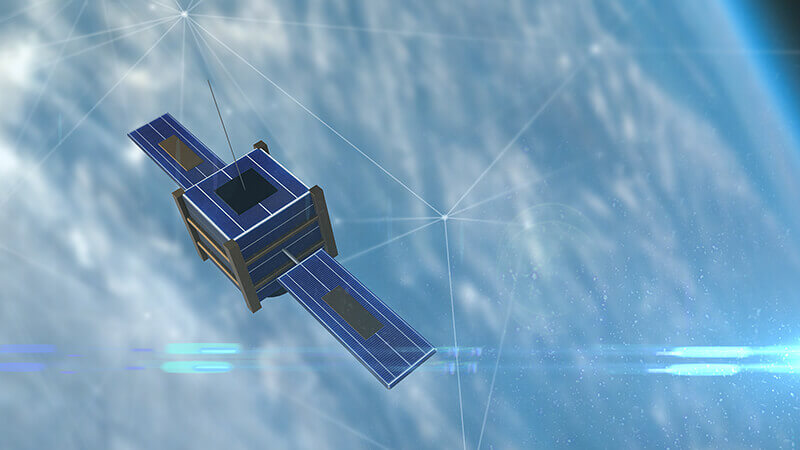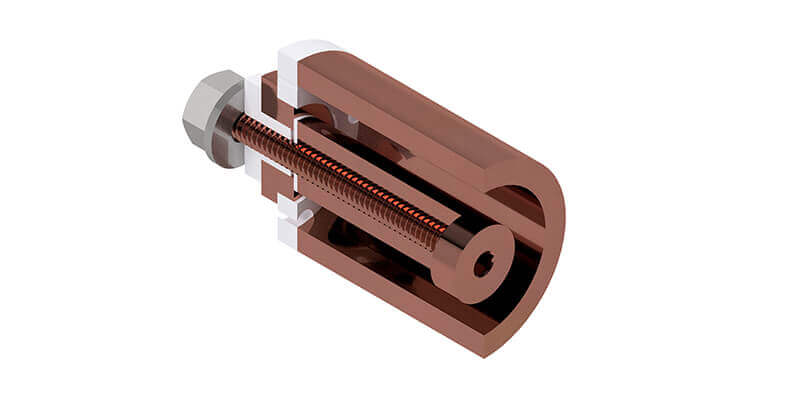February 6, 2019
New technology helps address big problems for small satellites
Launch system helps improve discovery capabilities, minimizes damages
 Purdue University researchers have developed a launch system for CubeSats to help improve discovery capabilities and minimize damages. (Stock photo)
Download image
Purdue University researchers have developed a launch system for CubeSats to help improve discovery capabilities and minimize damages. (Stock photo)
Download image
WEST LAFAYETTE, Ind. – CubeSats have become big players in space exploration. Their small size and relatively low cost have made them popular choices for commercial launches in recent years, but the process to propel such satellites in space comes with a number of problems.
Now, Purdue University researchers have developed a technology to address one of those key problems – the uncertainty of the ignition system that initiates the propulsion system of the CubeSats. Current ignition systems are unreliable and can be subject to significant and irreversible damage during the lifespan of the satellite. This rendering depicts a device that electromagnetically accelerates plasma to produce thrust - contrasting typical chemical thrusters. In order to create the propellant plasma, a low energy surface flashover (LESF) technique is employed at the beginning of the channel. (Rendering provided)
Download image
This rendering depicts a device that electromagnetically accelerates plasma to produce thrust - contrasting typical chemical thrusters. In order to create the propellant plasma, a low energy surface flashover (LESF) technique is employed at the beginning of the channel. (Rendering provided)
Download image
“We have created a lower energy triggering technology that uses nanosecond-long pulses, that allows the ignition and propulsion systems to function reliably for a very long time,” said Alexey Shashurin, an assistant professor of aeronautics and astronautics in Purdue’s College of Engineering. “Specifically, we have successfully tested the ignition system for greater than 1.5 million pulses and it remained operational and almost intact after the test. This is a giant leap for extending the lifetime of electric propulsion systems for CubeSats.”
Their work aligns with Purdue's Giant Leaps celebration, celebrating the university’s global advancements in space exploration as part of Purdue’s 150th anniversary. This is one of the four themes of the yearlong celebration’s Ideas Festival, designed to showcase Purdue as an intellectual center solving real-world issues.
Overall popularity of the CubeSats is heavily driven by the great advancement in miniaturization of electronic components and sensors that allows for new kinds of space missions and measurements using a CubeSat.
“It is exciting to tackle these new challenges presented on spacecraft of a much smaller scale than in previous years,” Shashurin said. “The next step for the CubeSats is to have a robust propulsion system for necessary maneuvering and station-keeping duties.”
Shashurin and his team worked with the Purdue Office of Technology Commercialization to file a provisional patent on the technology.
The work was published in the Jan. 10 edition of Plasma Research Express. It was also presented during the American Institute of Aeronautics and Astronautics SciTech Forum last month in San Diego.
The team is planning to participate in the National Science Foundation’s I-Corps program, which provides support for conducting extensive customer discovery with an ultimate goal to find industrial partners and commercialize the technology.
About Purdue Office of Technology Commercialization
The Purdue Office of Technology Commercialization operates one of the most comprehensive technology transfer programs among leading research universities in the U.S. Services provided by this office support the economic development initiatives of Purdue University and benefit the university's academic activities. The office is managed by the Purdue Research Foundation, which received the 2016 Innovation and Economic Prosperity Universities Award for Innovation from the Association of Public and Land-grant Universities. For more information about funding and investment opportunities in startups based on a Purdue innovation, contact the Purdue Foundry at foundry@prf.org. For more information on licensing a Purdue innovation, contact the Office of Technology Commercialization at otcip@prf.org. The Purdue Research Foundation is a private, nonprofit foundation created to advance the mission of Purdue University.
Writer: Chris Adam, 765-588-3341, cladam@prf.org
Source: Alexey Shashurin, ashashur@purdue.edu
An approach to modify a classic surface flashover by reducing the energy of the individual flashover event in order to reliably operate the same flashover assembly for large number of triggering events has been demonstrated. This modified surface flashover is referred to as Low Energy Surface Flashover (LESF). LESF is intended to trigger the discharge in electric propulsion systems throughout the entire operational lifetime. LESF differs from the conventional surface flashover in reducing the duration of high-current stage of the flashover to below <100–200 ns. This minimizes the damage to the LESF assembly and allows successful operation of the same assembly for >1.5 106 consecutive flashovers without failure. The amount of the seed plasma created in the individual LESF event was demonstrated to be sufficient to trigger a moderate current arc, which models a discharge in an electric propulsion system.

